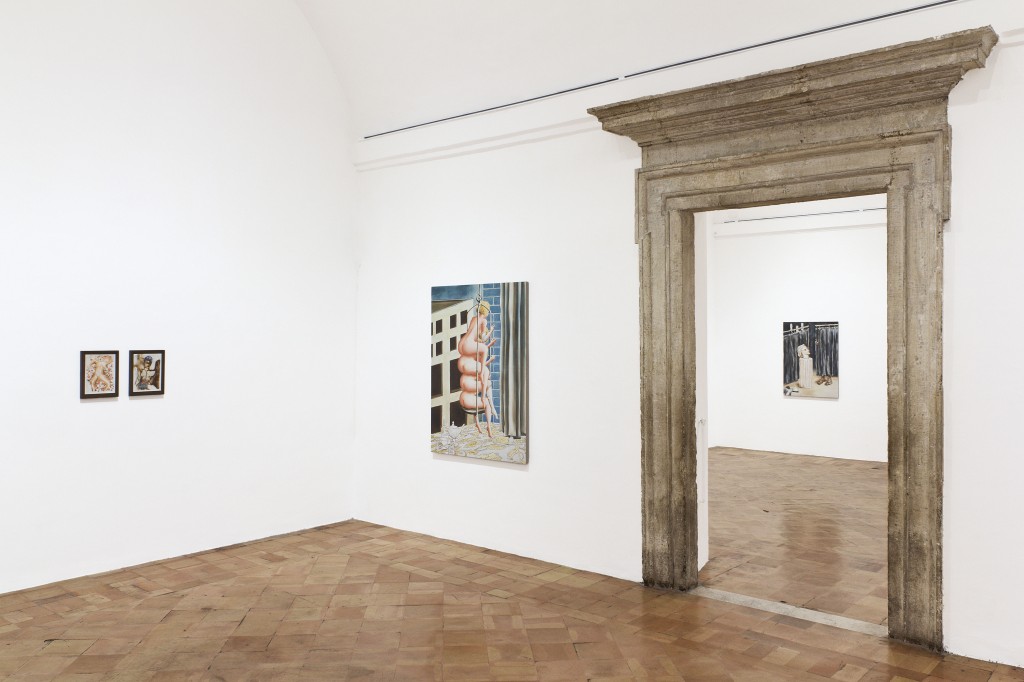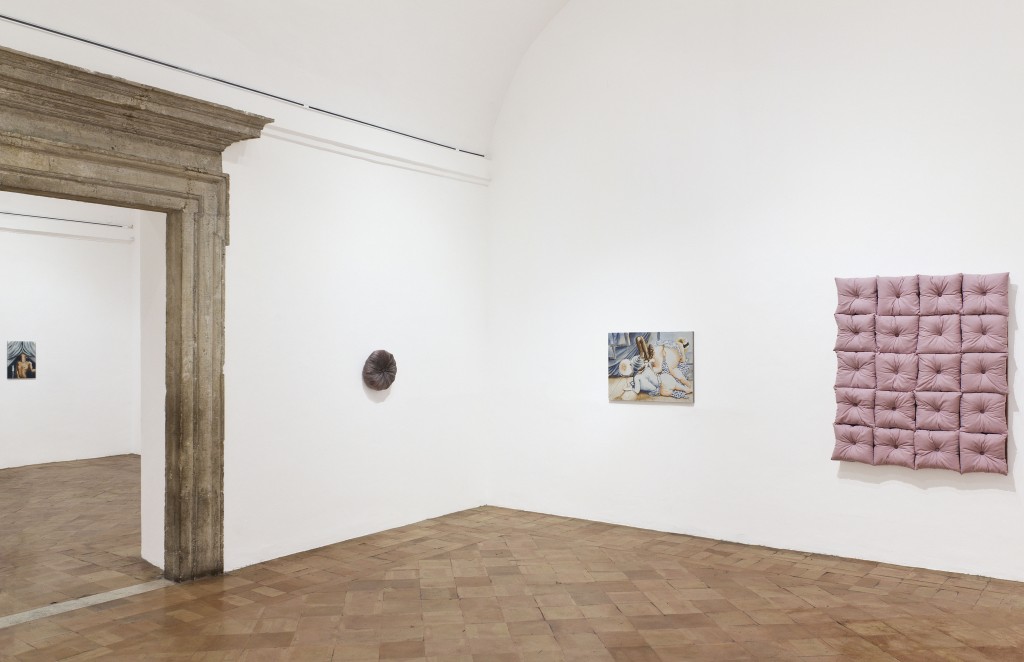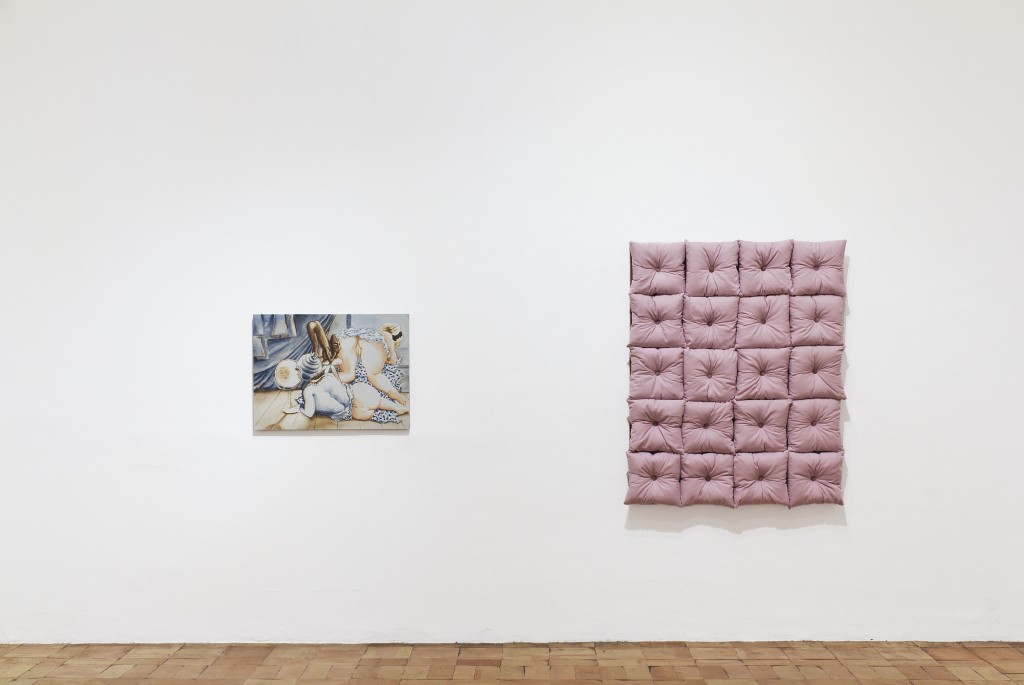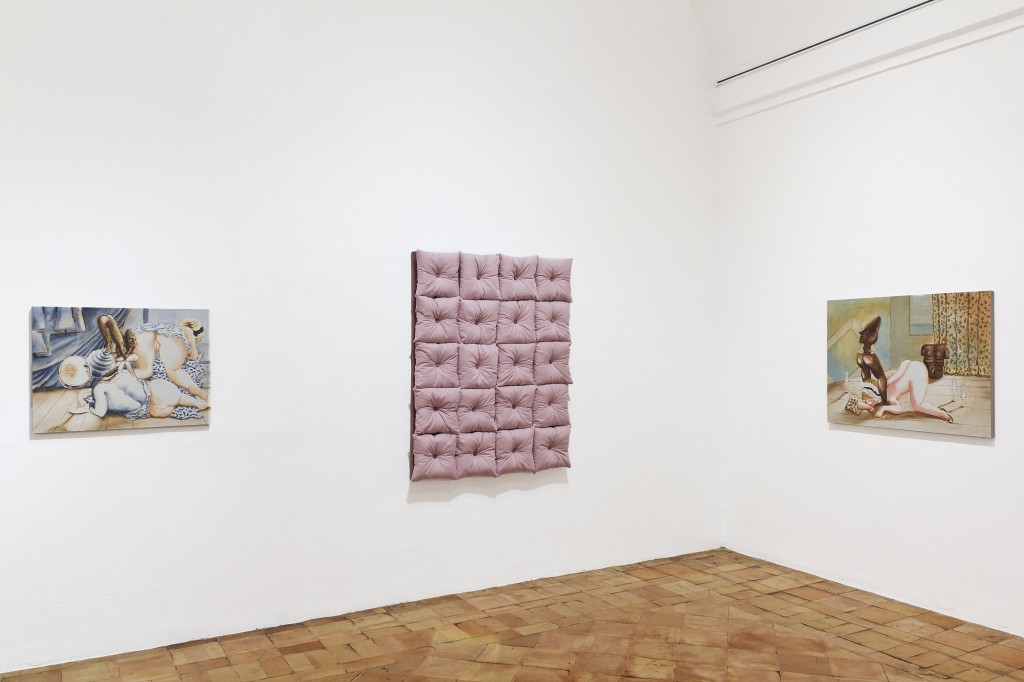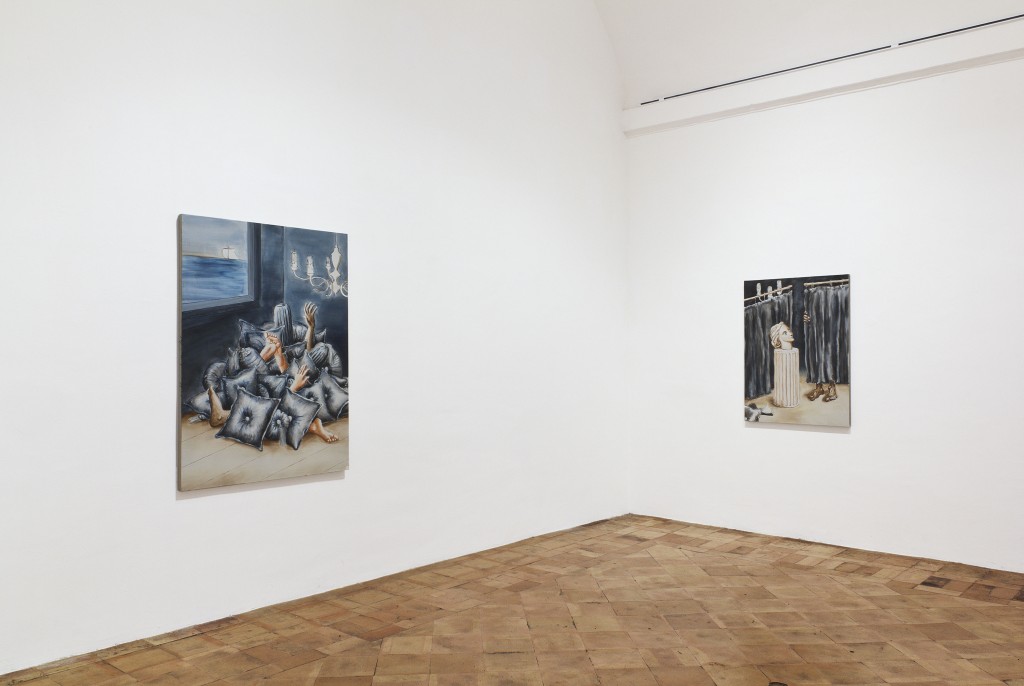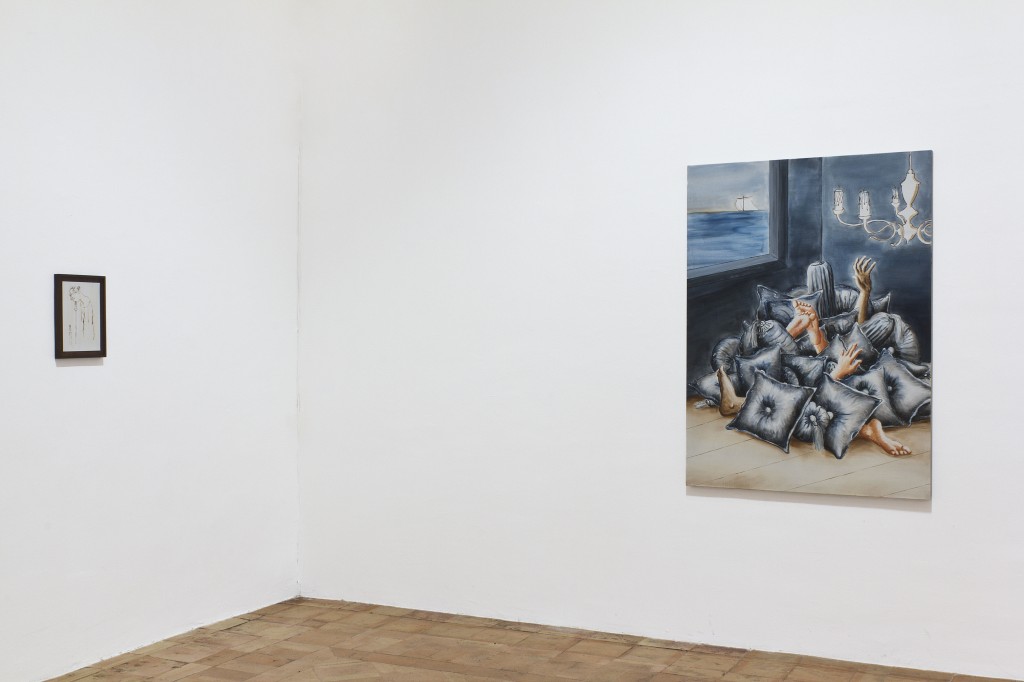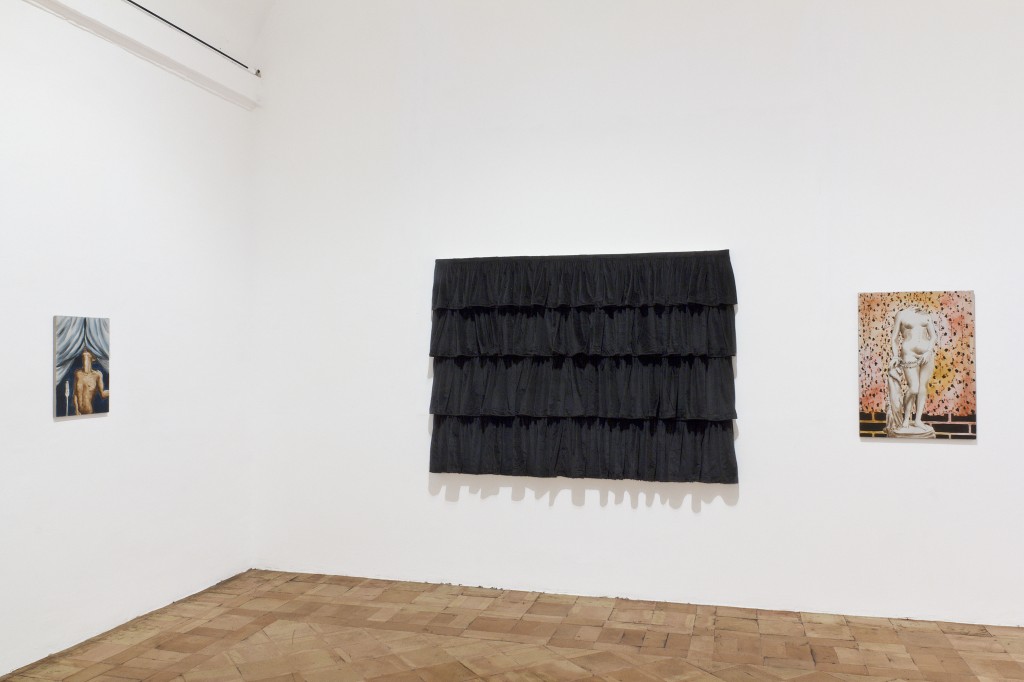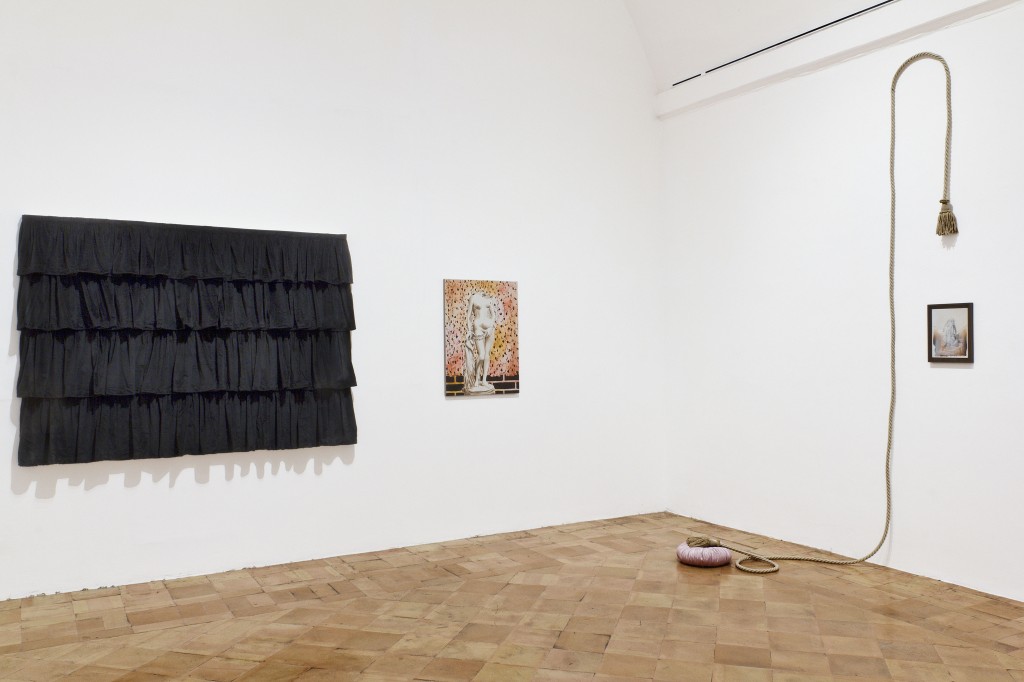The Lustful Turk (diptych), The Lustful Turk (Harem), The Lustful Turk (Coucou)
Installation view Villa Medici – The Academy of France, Rome
Photo Credit: Roberto Apa
The Lustful Turk (curtain), Cushion n.1 (Portrait of Eliza), The Lustful Turk (The Blue Room), Cushion n.2 (Portrait of Emily Barlow)
Installation view Villa Medici – The Academy of France, Rome
Photo Credit: Roberto Apa
The Lustful Turk (The Blue Room), Cushion n.2 (Portrait of Emily Barlow)
Installation view Villa Medici – The Academy of France, Rome
Photo Credit: Roberto Apa
The Lustful Turk (The Blue Room), Cushion n.2 (Portrait of Emily Barlow), The Lustful Turk (The Green Room)
Installation view Villa Medici – The Academy of France, Rome
Photo Credit: Roberto Apa
The Lustful Turk (Mum the Turks are coming), The Lustful Turk (Coucou)
Installation view Villa Medici – The Academy of France, Rome
Photo Credit: Roberto Apa
The Lustful Turk (Blow), The Lustful Turk (Mum the Turks are coming)
Installation view Villa Medici – The Academy of France, Rome
Photo Credit: Roberto Apa
The Lustful Turk (Curtain), Curtain n.7 (Portrait of Ali, Sultan of Algeri), The Lustful Turk (The Greek Slave)
Installation view Villa Medici – The Academy of France, Rome
Photo Credit: Roberto Apa
Curtain n.7 (Portrait of Ali, Sultan of Algeri), The Lustful Turk (The Greek Slave), The Lustful Turk (Souvenir)
Installation view Villa Medici – The Academy of France, Rome
Photo Credit: Roberto Apa
p
p
IL TURCO LUSSURIOSO / THE LUSTFUL TURK, VILLA MEDICI – THE ACADEMY OF FRANCE, NOVEMBER 23 – DECEMBER 16 2012
Curated by Alessandro Rabottini
Patrizio Di Massimo’s solo exhibition, THE LUSTFUL TURK, inaugurates a project of three personal exhibitions conceived and curated by Alessandro Rabottini. This cycle of shows ideally completes the itinerary that began with Theatre of Expositions #3 held at Villa Medici this year in June and October.
On the occasion of his personal show at the French Academy in Rome – Villa Medici, Patrizio Di Massimo presents a new series of paintings, drawings and objects devised as the project of an exhibition unit.
As in the past, his present works make use of corporeal and sexual figures: a field where it is possible to critically investigate specific crucial intersections in Italian and European history and their survival in the collective consciousness of today.
The title of the exhibition, THE LUSTFUL TURK refers to the novel of the same name that appeared anonymously in England in 1828. Literary criticism considers this narrative to be one of the first examples of popular literature where the production of cultural stereotypes linked to colonialism and the Western perception of Middle Eastern cultures are evident. The images presented in the exhibition have been partly inspired by certain passages in the book and, starting from these suggestions, they develop a recitation devoid of detailed references.
THE LUSTFUL TURK is a first-person epistolary work of fiction that narrates the story of Emily Barlow, an English girl who was kidnapped in 1814 and brought to the harem of Ali, the bey of Algiers. In the few pages of this pornographic novel, we witness the recounting of the seduction of Emily by the bey, a seduction that goes from imprisonment and repeated rapes to the girl falling in love with her captor. The fact that the bey of Algiers is described as a “Turk” and as a sultan is one of the many cultural misinterpretations found in the heart of this book which, in its own fashion, exemplifies a form of generic assimilation of the concept of “the other” perceived as a vague and absolutely non-specific threat.
The exhibition explores the processes through which the complexity of a culture is reduced to a progression of oversimplifications and stereotypes while dealing with the themes of the encounter/clash of cultures through the metaphors of penetration, seduction and cannibalism. Some paintings, for example, present a series of symbolic substitutions which define the link between European and African cultures: the black male body is assimilated to the forces of nature and sexual potency, while the white female body is in turn fetishized as ideality and classical ruin. African statuary, instead, consists of objects which – beginning with Cubism – have become an integral part of European visual and avant-garde culture in the form of fetishistic projection and assimilation. Indeed, it is not by chance that many of the images present in the exhibition contain more or less explicit references to historical precedents within the history of painting. We find citations in the metaphysics of Giorgio De Chirico and Carlo Carrà as well as in the works of Francis Picabia and George Grosz. If, in fact, Italian Metaphysics, Cubism and Surrealism absorbed the organic reality of the body within the figure of statues, the mannequin and the amputated limb, artists such as Picabia and Grosz assimilated idioms such as graphic and commercial illustrations as well as pornography within the field of painting.
With THE LUSTFUL TURK Di Massimo has devised a narration through fragments in which we find fear, desire, violence – both physical as well as cultural – as a metaphor of reciprocal incomprehension: sexual fantasy as a ground for the survival of a racist stereotype and the image of penetration as a figure of the threat to the integrity of Western culture.
This cycle of exhibitions explores the concept of “Accademia” in its multiple meanings interlacing historical, aesthetical and political reflections. The cycle will continue with solo exhibitions with Danh Vo (January 2013) and Victor Man (June 2013)
In recent years the international artistic debate has concentrated on a series of themes related to the processes of education and transmission of knowledge, the survival of ideologies of the past in the world of today and the possibility that visual art can function as an area where progress and anachronism can blend together. Thus the concept of Accademia becomes a prism in which it is possible to manifest the opportunities and contradictions of our times in relation to tradition. The figure of the Accademia can, therefore, be explored as a physical, cultural and metaphoric site where the transmission of specific artistic knowledge bears a more complex history consisting of a world vision which evokes, more or less explicitly, the traumas of history and the repression of ideology.
